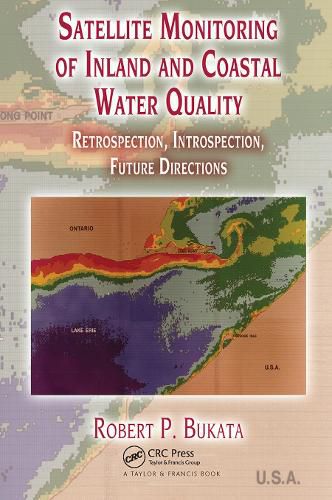Readings Newsletter
Become a Readings Member to make your shopping experience even easier.
Sign in or sign up for free!
You’re not far away from qualifying for FREE standard shipping within Australia
You’ve qualified for FREE standard shipping within Australia
The cart is loading…






Satellite Monitoring of Inland and Coastal Water Quality: Retrospection, Introspection, Future Directions reviews how aquatic optics models can convert remote determinations of water color into accurate assessments of water quality. This book illustrates how this conversion can generate products of value for the environmental monitoring of optically complex inland and coastal waters.
The author emphasizes how terrestrial, aquatic, and wetland remote sensing are underutilized tools due to a lack of influential end-usership. He takes a realistic look at this disinterest and examines why it exists, how it can be abated, and the synergies that need to be activated among technologists, scientists, entrepreneurs, policy-makers, and water quality professionals.
Offering a guide to possible linkages between scientific products of remote sensing and their application to mandates and priorities of environmental stewards and policy-makers, this book uses the research and science agenda of Environment Canada as a template for generic environmental interests and concerns. It is hoped that this guide presents a compelling case for incorporation of aquatic remote sensing into protocols of ground-based environmental monitoring networks.
$9.00 standard shipping within Australia
FREE standard shipping within Australia for orders over $100.00
Express & International shipping calculated at checkout
Satellite Monitoring of Inland and Coastal Water Quality: Retrospection, Introspection, Future Directions reviews how aquatic optics models can convert remote determinations of water color into accurate assessments of water quality. This book illustrates how this conversion can generate products of value for the environmental monitoring of optically complex inland and coastal waters.
The author emphasizes how terrestrial, aquatic, and wetland remote sensing are underutilized tools due to a lack of influential end-usership. He takes a realistic look at this disinterest and examines why it exists, how it can be abated, and the synergies that need to be activated among technologists, scientists, entrepreneurs, policy-makers, and water quality professionals.
Offering a guide to possible linkages between scientific products of remote sensing and their application to mandates and priorities of environmental stewards and policy-makers, this book uses the research and science agenda of Environment Canada as a template for generic environmental interests and concerns. It is hoped that this guide presents a compelling case for incorporation of aquatic remote sensing into protocols of ground-based environmental monitoring networks.